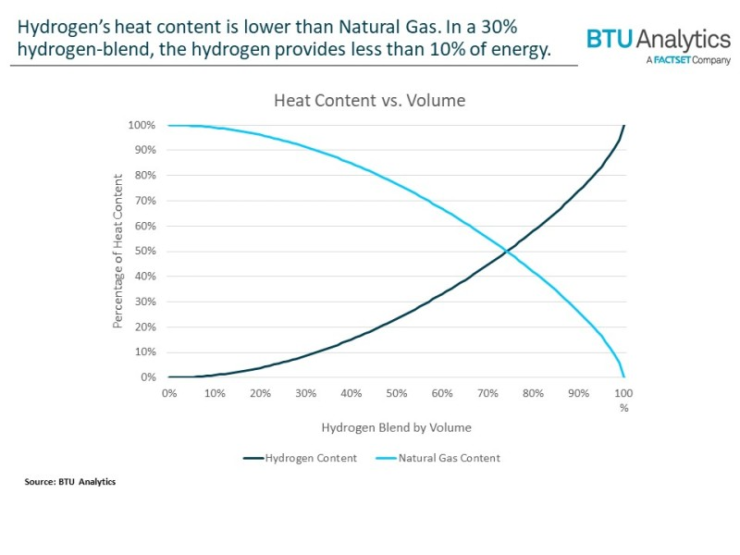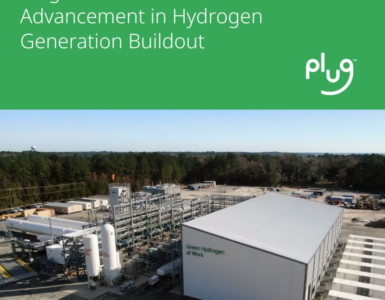Can hydrogen solve Canada’s energy woes?.
Ongoing events in Europe, including the war in Ukraine and natural disasters, have raised many questions about the future of energy supply both in Canada and internationally. This, in turn, has placed Canada’s role as an energy supplier in doubt. If you were to believe the Canadian government, hydrogen presents a significant opportunity to both reduce emissions and create a new export product.
However, a deeper examination of this strategy reveals some potentially insurmountable problems. These are outlined in an open letter penned by 110 academics and 55 civil society groups which calls on the Trudeau government to reconsider and limit the proposed hydrogen investment tax credit (in the spirit of full disclosure, the author is a signatory to that letter).
When considering hydrogen’s potential, the first, and biggest question is where are we going to get hydrogen? Alberta, currently Canada’s largest energy producer, plans on creating hydrogen from natural gas (the resulting fuel is known as ‘grey’ hydrogen).
🔥 What about we co-host a webinar? Let's educate, captivate, and convert the hydrogen economy!
Hydrogen Central is the global go-to online magazine for the hydrogen economy, we can help you host impactful webinars that become a global reference on your topic and are an evergreen source of leads. Click here to request more details
While this approach is effective in exploiting an existing resource which is plentifully available, the production of grey hydrogen still produces significant amounts of greenhouse gasses (this can be abated using costly carbon capture and storage, or CCUS, technologies to turn it into ‘blue’ hydrogen). A better path is to use existing natural gas, coupled with CCUS—eliminating the extra (and more expensive) process of transforming natural gas into hydrogen.
Though even this solution presents challenges, due to the ongoing debate as to whether CCUS is viable in these circumstances. In other words, why build expensive technologies and infrastructure as a stopgap, when those investments could be channeled into other solutions?
The UK has also explored the use of ‘green’ hydrogen, which is produced through electrolysis (the separation of water into hydrogen and oxygen) powered by renewable sources. However, reports have found that it is far more effective to use new renewable energy capacity to take ageing conventional energy systems (such as coal plants) offline, and meet the needs of increasing demand.
The International Energy Agency had similar findings, noting that by 2070, using electrolysis to create hydrogen could end up consuming 20 percent of global electricity production. The Canadian Climate Institute anticipates that Canada will need to increase its electricity generation capacity by up to three-and-a-half times by 2050. Will we have the resources to expand our electricity networks to meet consumer needs and build out renewables to create hydrogen?
The second question confronting hydrogen’s potential is what are we going to use hydrogen for? While the uses in industrial cases such as chemical production (including fertilizers) and steel making are significant, the hype behind hydrogen as a transportation fuel lacks supporting evidence.
The 2021 Canadian Energy Outlook produced by McGill University’s Institut de l’énergie Trottier finds that hydrogen will comprise a small share of total transport fuels even in 2060, “in part due to current difficulties in assessing the exact technical role it can play.” Obviously, innovation and technology breakthroughs are difficult to predict, but there are some obvious challenges which should be considered.
One challenge is that hydrogen is only a useful fuel in certain contexts. This is not because hydrogen is a poor fuel in general (though its energy density is much lower than gasoline, thereby requiring a larger tank for equal energy or range) but because it is difficult to move around.
While current research shows that hydrogen can be safely blended into natural gas by up to 17 percent, pure hydrogen gas cannot be safely transported using existing pipeline infrastructure. When blended, however, hydrogen plays a minor role in the energy provided, as demonstrated by a recent report by BTU Analytics.
What about building new hydrogen infrastructure? A report by the Transition
Accelerator suggests that the future of a hydrogen economy will “rely on developing infrastructure for low-cost distribution and delivery of hydrogen.” To this end, the report states, “pure hydrogen pipelines hold the most promise for large scale and low-cost transportation of hydrogen. Nonetheless the construction and installation of pipelines is a costly, complex, and time-consuming process that requires substantial demand for fuel movement to attract private investment.”
Canadian Dimension readers hardly need reminders about
Canada’s repeated problems building pipelines. Without extensive physical infrastructure, transporting hydrogen would have to be done by road or rail, options which are significantly less efficient (and more expensive) and already feeling the strain of more demand than capacity.
Other suggested uses include aviation, however, again hydrogen faces steep criticisms. One analysis suggests that powering a single airport (in this case the Paris Orly Airport), would require 18 gigawatt-hours every day, equivalent to the full production of one typical nuclear plant of 900 megawatts. “If, to ensure that hydrogen production actually reduces carbon emissions,” the authors write, “the electricity is produced through solar power, 44 square kilometres of solar panels would be needed—a footprint representing three times the entire surface area of the [Paris] Orly airport itself. Covering the entirety of an airport such as Orly would only produce enough fuel for two to three aircraft a day.” Problems such as these have caused the former CEO of Rolls Royce (the world’s leading manufacturer of aircraft engines) to conclude that relying on hydrogen as a sustainable aviation fuel is simply not an option.
Outside of aviation, contexts in which the volume of hydrogen as a fuel is not restrictive opens up opportunities. The 2021 Canadian Energy Outlook suggests that both marine shipping and rail (and possibly heavy land transport) will be areas where hydrogen will likely become dominant.
Finally, an ambitious claim put forward by proponents is that Canada could become a hydrogen exporter, particularly to Europe, to shore up continental energy demands in the face of distrust of Russian oil and natural gas. While admirable in concept, the problem here is one of time.
It is true that Europe is currently in need of alternative energy suppliers, but Canada does not yet possess the aforementioned requisite infrastructure to export hydrogen (or even existing natural gas) to Europe in effective volumes. The necessary export infrastructure would be vast and expansive, and as with Canadian pipelines, would take time to build.
An ambitious timeframe would demand that export infrastructure be completed in a matter of years. However, it seems unlikely that European countries would not have adapted or built their own energy supplies (likely renewable energy) in the meantime. This would leave Canada with expensive sunk costs, and no ready market.
While there is potential for decarbonization in industry (the Canada Energy Regulator suggests that the industrial sector will account for 65 percent of hydrogen use by 2050) the idea that Canada could become a hydrogen exporter is currently unrealistic. Rather than focusing on single technologies as ‘silver bullets’ for our climate and energy problems, the Government of Canada needs to broaden its outlook and target specific energy sources for specific uses.
In its Big Switch report, the Canadian Climate Institute concludes that a broad mix of energies and technologies, with comprehensive policies and infrastructure to support their roll-out, is necessary for a net-zero transition.
There is a future for hydrogen, but it is not a panacea. Nor is anything about Canada’s energy pathways certain. Further research and modelling is necessary, and upcoming reports like Canada’s Energy Future 2023 (produced by the Canada Energy Regulator) will help guide and inform policy and decision making. What does seem certain, however, is that Canada’s current hydrogen strategy is based on implausible ambitions and fails to grasp the very real obstacles standing in the way of mass adoption.
Burgess Langshaw Power is a former policy analyst currently completing his PhD in Global Governance at the Balsillie School, University of Waterloo. His policy expertise includes climate interventions and energy technologies. Views expressed here are his own and not necessarily those of his school or employer.
Can hydrogen solve Canada’s energy woes?, February 15, 2023








